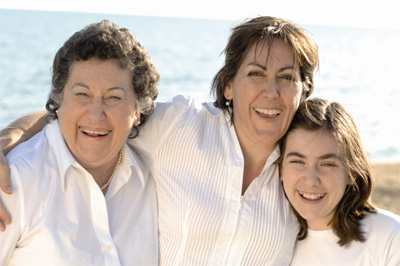Vitamin D Deficiency

Vitamin D Deficiency
The main source of vitamin D in Australia is from sun exposure. When sunlight hits our skin, it reacts with a cholesterol-like substance and produces vitamin D. The amount of sun exposure needed depends on your skin colour, where you live and the time of year.
Vitamin D deficiency is common in Australia, despite one of the highest ultraviolet (UV) radiation levels worldwide and an abundance of sunshine.
You may be at risk if you have little or no sun exposure. This includes:
Elderly people
People in residential care or who are mostly indoors
Babies of vitamin D deficient mothers
Dark-skinned people
People who cover their skin for religious/cultural reasons
People working irregular hours
Postmenopausal women
Vitamin D is an essential nutrient, without which our bodies find it hard to absorb enough calcium and phosphorus from the gut. We need calcium for healthy bones, teeth and muscles. Vitamin D also helps with cell growth, hormone function, regulating our nervous system and maintaining a healthy immune system.
You can get small amounts of vitamin D from some foods including cod liver oil, egg yolk and oily fish such as salmon and sardines. In Australia, margarines and some milks and dairy products are fortified with vitamin D. This may help people at risk of vitamin D deficiency, but most Australians get enough vitamin D by spending regular time outdoors.
It's important to balance the risk of skin cancer from too much sun exposure with time in the sun to help maintain vitamin D levels. Follow these simple tips to make sure you get enough vitamin D from the sun safely:
Expose arms, hands and face to sunlight for 10 minutes a day in summer, 15-20 minutes in spring and autumn and 30 minutes in winter outside peak UV times (10am-2pm or 11am-3pm daylight savings time).
People with darker skin may need longer sun exposure periods.
Always protect yourself from the sun when the UV index is above 3.
Never use solariums as a substitute for sunlight as they emit dangerous levels of UV, which can increase your risk of skin cancer.
If you are concerned about your vitamin D levels, see your GP, as symptoms may not be obvious.
Published with the permission of Jean Hailes for Women's Health www.jeanhailes.org.au or 1800 JEAN HAILES (532 642)
MORE
- Chiropractic Myths & Truths
- Gerard Fogarty Arthritis and Knee Replacement...
- Kym Ellery The ELLERY Eyewear Collection Interview
- Dr Ross Walker The Real Modern Killers Interview
- Shelly Horton Hay Fever Help Interview
- Sebastian VanVeenendaal Royal Rehab's Beach...
- Abigail Koch Family Private Health Insurance...
- Monique Cashion Organic Awareness Month Interview
- Dr Bill Harris Omega-3s Interview
- The Top Ten Health Myths Busted
- Professor Bolin IBD Management a Life-Long...
- Anthia Koullouros Best Cold and Flu Defence...
- Leprosy in NSW
- Julie-Anne Mitchell Go Red for Women Healthy...
- Insight into Chronic Disease Hospitalisations...
- Jeff Chan Mobile Phone Allergies Interview
- How to Conquer Bad Winter Health Habits
- Bad Cholesterol Behind Cancer Spreading In Body
- New Screening Test Recommended To Help Prevent...
- Support For The Rural Nurse Workforce A...
- Kathy Nielsen Ovarian Cancer Australia National...



